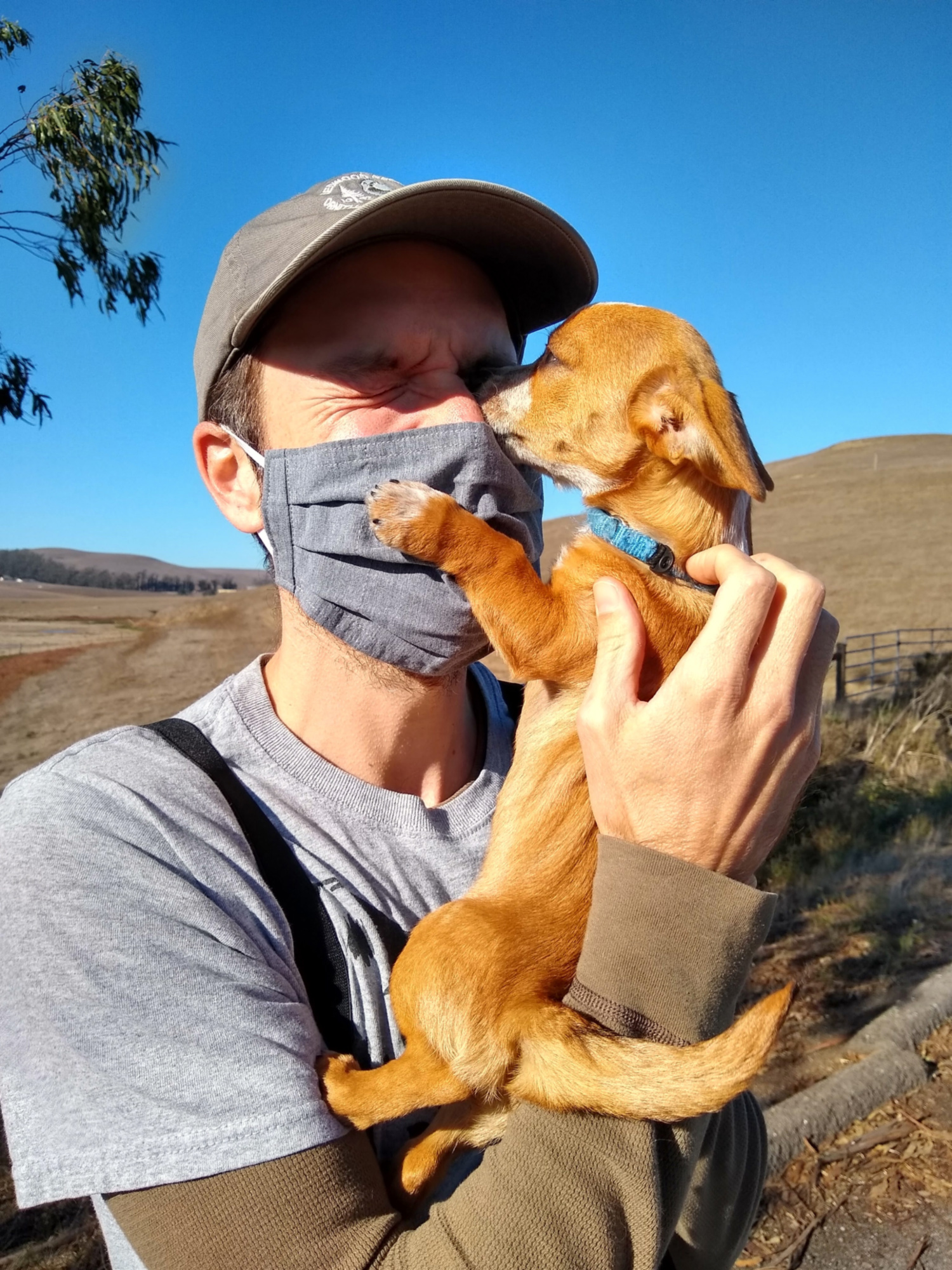Back in October, we camped a night at Gualala Point Regional Park, and enjoyed sharing the great outdoors with a host of birds, bugs, butterflies, and critters.
After setting up at the campground, we walked a connector path towards the park, and quickly ran into the vibrant Townsend’s Warbler. Learn more about this attractive wintertime species at this older post of ours: Townsend’s Warbler, Winter Gem of the Conifers

Every time we’re scanning our surroundings for feathered friends, our attention naturally picks up lots of other colorful life as well!



As we strolled across a grassy expanse, we happened upon this idyllic sight — a buck resting in the grass.

Later, a few deer graced us with a glimpse of their river-crossing technique — what a delight to witness!

As we explored the coastal scrubland near the bluffs, we spotted a Palm Warbler foraging amid a group of White-crowned Sparrows. Though the Palm Warbler is primarily an East Coast bird, a small handful are spotted along the Pacific Coast during fall migration and over winter. We personally hadn’t encountered one since 2020, so this was an unexpected surprise for the day!

The Palm Warbler’s bright-yellow under-rump is hard to miss, given that it bobs its tail up-and-down constantly. And unlike most warblers, Palm Warblers primarily forage on the ground or low in shrubs in sparrow-like fashion.

As we admired this special sighting, we noticed a nearby Savannah Sparrow glowing in the sideways sun of late afternoon. We got a nice look at the characteristic yellow wash of its face, along with the delicate streaks on its breast.
For tips on how to differentiate the Savannah from other similar local sparrows, check out our post: Streaky Sparrows of Northern California: Song, Savannah, Lincoln’s, and Fox Sparrow


The next morning, cozy in our tent nestled among the redwoods, we awoke from our slumber to nature’s alarm clock. “Wek-wek-wek!” from some Steller’s Jays. The soft “chup-chup” of a Hermit Thrush. The typewriter-esque “chit-chit-chit-chit-chit-chit” of a Ruby-crowned Kinglet. The sharp “PEEK!” of a Hairy Woodpecker. Camping is the best!
We set out to greet the misty morning and meander the park.

There’s nothing like bright morning sun to illuminate a bird’s sparkling colors. Also, fall is a great time to observe birds after they’ve molted their worn feathers of summer. This annual molting results in a particularly fresh, crisp appearance. Take a look at this scrubber in its Sunday best.

In our meandering, we ran right into a mixed flock of nuthatches, chickadees, creepers, kinglets, and more! Though Pygmy Nuthatches are a familiar sight around our house, we never tire of these teeny, lively birds.

In the recording below, a Black Phoebe kicks us off with a burst of song before giving way to the bubbly “pip”-s of a Pygmy Nuthatch.
The Red-breasted Nuthatch is a bird we see far less often, so we savored our time observing them. This individual meticulously probed each cypress cone for seeds.


The nasally, kazoo-like quality of of a Red-breasted Nuthatch always makes us chuckle.
We captured this funny snap of one stretching on a branch. If a bird used human words, what would this one be saying right now?!

Chestnut-backed Chickadees are often the glue that binds a fall/winter mixed flock together.

It’s fun to bask in the energy of the sounds of a mixed flock. Listen below as a Pygmy Nuthatch enthusiastically “pip“-s while a chickadee performs several classic renditions of its “chicka-dee-dee” call. What could they be communicating to each other?
Another Townsend’s Warbler made an appearance in the mixed flock — its black throat gives away that it is a male bird.

Our ears perked up at the ultra-high-pitched calls of a Brown Creeper, and we finally spotted it when it flew onto a nearby tree trunk. Check out that perfect camouflage. If we weren’t looking at its profile, it’d disappear completely!

As we approached the misty ocean, this White-crowned Sparrow posed perfectly for a portrait.


A small group of Killdeer flew overhead vocalizing — listen to them here.
Though brush rabbits seem to be fairly skittish, this one remained grazing out in the open as we walked by a few feet away — almost daring us to try and pet it!


At the beach, we heard the approach of an American Pipit cut through the sounds of the loud, crashing waves. It landed on a piece of driftwood and looked out at the sea. Listen below to a quick snippet of it vocalizing against the roar of the ocean.

The abundant bird life and dramatic landscapes of Gualala Point Regional Park make it a favorite destination of ours, and camping there during October fall migration is becoming a tradition for us. Check out this prior post to see what rare bird we spotted in the campground back in 2020: Gualala Point Regional Park & Campground



Of course, there was a Peregrine. Lol.
You know it! 🙂
We love your posts! Keep ‘‘em coming!
Hi, Cynthia & John! Thanks for reading along, and happy holidays to you both!! 🙂
great post!
Thanks for taking the time to read and comment! 🙂
Lovely! The Pygmy Nuthatches (pnuts) are always a treat. I saw my first Sonoma County Palm Warblers with you two in Valley Ford. Do you remember? I had a foster puppy with me🤩
Oops didn’t mean to be anonymous
You mean THIS puppy?!?! The most adorable pup we’d ever seen! 🐶 That was a wonderful day birding with you!

We love your posts and this one is just what we needed now, as we’re going through a tough time away from our Sonoma home nest. Thank you!
Aww, so sorry to hear you’re experiencing difficulty — glad you could feel a little relief with some Sonoma County birds! 🙂